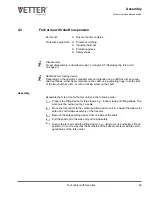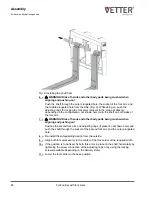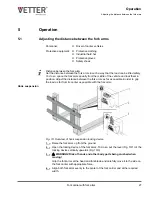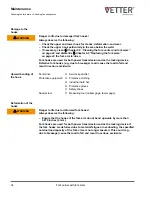
In addition, always observe the following:
–
Check the fork carrier for any permanent deformation at regular intervals. Immedi-
ately prevent further use of deformed fork carriers and have them checked by a
trained service specialist.
–
Check the fork carrier and fork arms for deformation and cracks using suitable pro-
cedures. Have such procedures performed by trained service specialists as part of
the legally prescribed inspection. Pay particular attention to the areas of the upper
suspension and to the welded connections. If there are any signs of cracks, immedi-
ately ban any further use of the fork carriers and fork arms.
The driver of the carrier vehicle is obligated to perform regular visual inspections of the
fork carrier.
6.4
Checking the fork arms
Risk of injury due to irregular checks!
– Have the fork arms checked by a service specialist or the manufacturer at
least once a year (more frequently for heavy usage or multiple-shift opera-
tion).
– Carry out the test based on the currently relevant standard. The service spe-
cialist will specify the scope of the test and the test interval.
The load capacity of the fork arms is impaired if the fork arms are damaged.
Using damaged forks (e.g., in the event of material breakage due to micro
cracks) can lead to serious accidents.
6.4.1
Checking the locking device and safeguarding device
Personnel:
n
Driver of carrier vehicles
Protective equipment:
n
Protective clothing
n
Industrial hard hat
n
Protective gloves
n
Safety shoes
Incorrect checks
L
WARNING
Maintenance
Checking the fork arms > Checking the locking device and safeguarding device
Fork carrier with fork arms
32
Summary of Contents for ManuTel
Page 2: ...Fork carrier with fork arms 2 ...
Page 52: ......





































